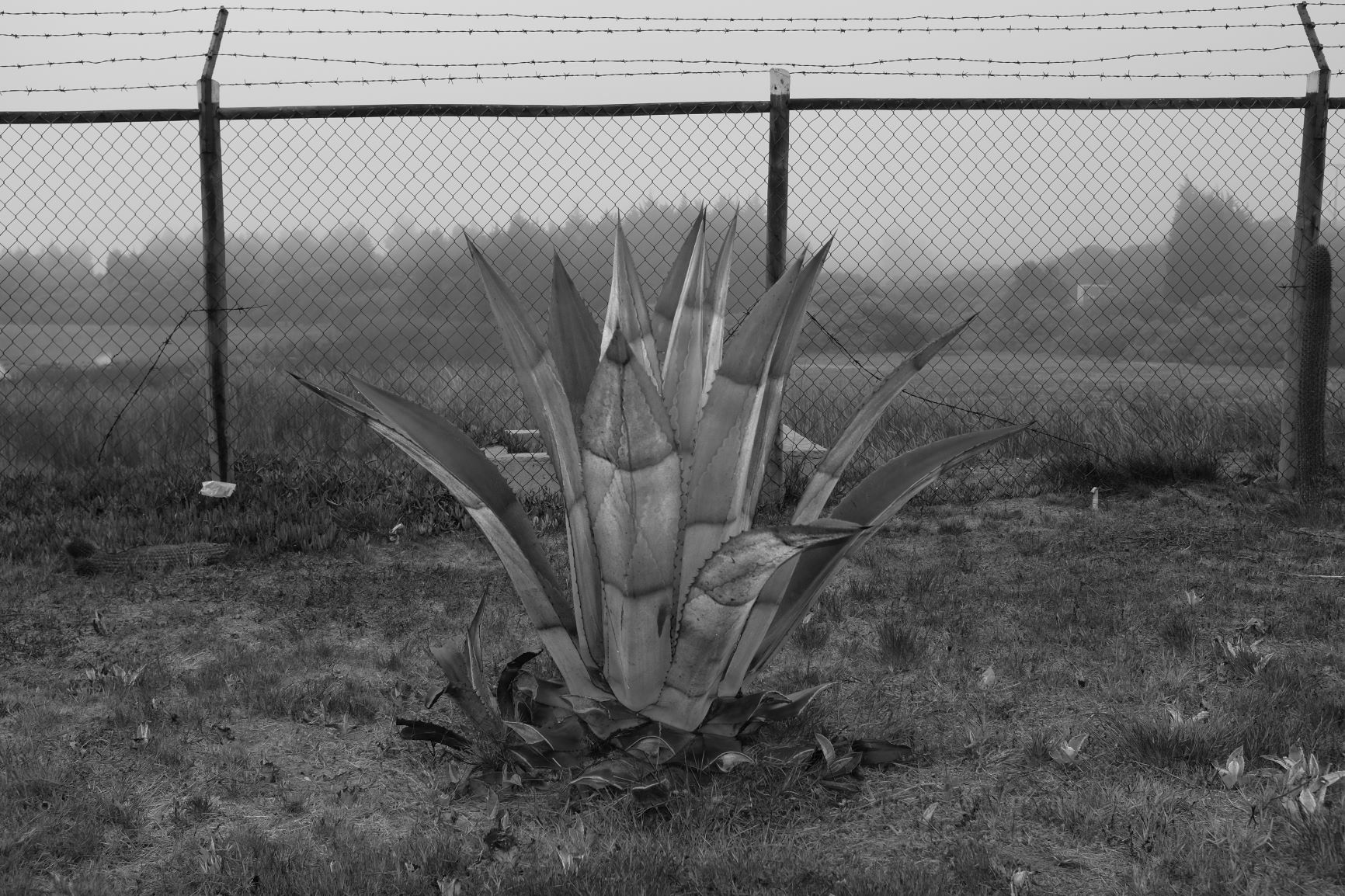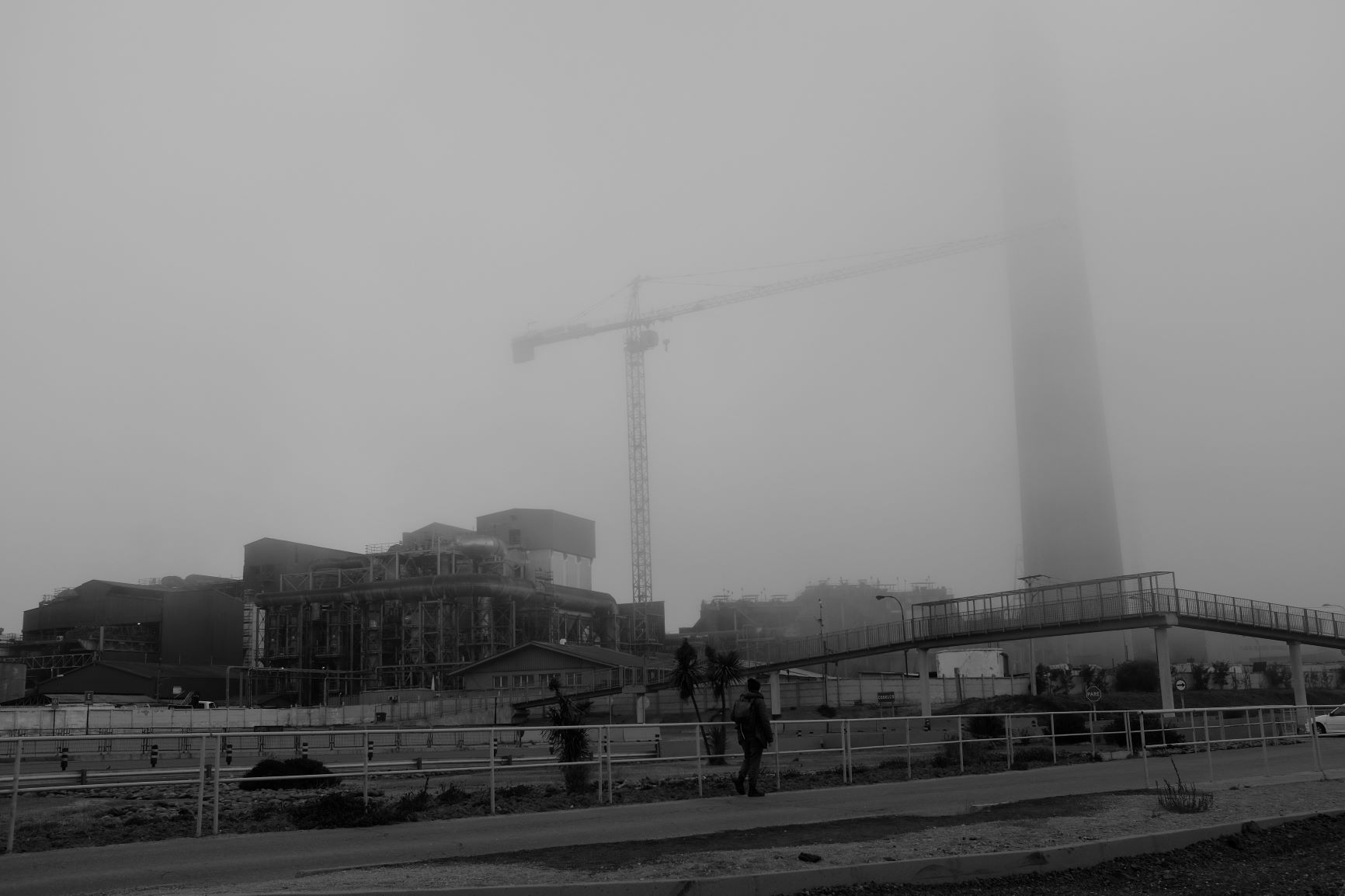José Llano Loyola and Paulina E. Varas
At first sight, the port of Ventanas, located 60 kilometres north of Valparaíso, and the surrounding town seem to be places affected by catastrophe. If this impression is indeed factually the case, is important to understand the different levels of complexity of this devastating condition, considering that communication and information devices also operate at the core of human subjectivity, molding it for its exploitation and encountering, in this context, somatic rebellion movements.
Disciplines and wisdoms define the body differently. Many images appear in this process. The formation of extractive processes and the impact of logistics have bodily and subjective expressions. In the case of Ventanas, these include forms of pollution that remain in the organs and infect them to death, toxic clouds caused by the refinery that move through the air and get into children’s lungs, and ships sailing from the port and crossing oceans to keep capital in movement. All of these expressions establish more than human connections.
The term somatheque, proposed by P. B. Preciado, approaches the body as a political and cultural record. Thus, the somatic apparatus is something broader than the body as an organic objectivity. A somatheque is not limited to the fleshy envelope of the body, but should rather be understood as a biological substrate that intertwines with the production and farming networks specific to technoscience. In our case, we use the notion of somatheque in order to reflect on counter-representations of processes involving complex variables – the economic development stimulated by the port sector, the copper refinery and its associated pollution, and the ways in which the community resists, since these practices are not consistent with the possible forms of life in the territory of Ventanas. Furthermore, bodies continue living interrelated to pollution, port logistics, the copper distribution process, lungs filled with arsenic and a sea without fish.
Today, in relation to planning, implementing and effectively controlling flows of material and immaterial goods, the concept of logistics presents us with a different way to understand the city, its information economy and ecosystems of labour mobility. It also offers another angle from which to understand the regulation of conflicts between the state, its public-private allies and communities affected by pollution that embodies and invokes remnants of a model of extractivist development. The town of Ventanas evolved from housing a container terminal or shipping port into a hub interconnecting peripheries on a transnational scale. Thus, it involves not only processes of globalization but also the formation of a ‘complex network of distribution systems’, according to which the abstractions of the capitalist operations are perceived as fragments of a memory that has lost its place of origin. Furthermore, there is a duality in the town of Ventanas between the soil and the reallocation of a coastal edge of services. The way in which services are demanded through transnational configurations and agreements – which can be illustrated with contingency and supply chains – shows a new social-urban diagram of the relations of the displaced or those who absorb this material and immaterial elasticity in relation to space and livability.
Faced with pollution, the community establishes a founding solidarity within the culture of extractivist exploitation. This solidarity articulates a local kind of knowledge production and allegation, resulting in a horizontal pedagogy about singular and collective ways of doing which grow around the logistical processes maintained in the industrial area.
The aforementioned process has developed throughout time, involving different institutions. In 1965, the State of Chile established an Inter-Municipal Land-Use Plan for the region of Valparaíso (Plan Regulador Intercomunal), which created Industrial Suburbs (Zonas Satélites Industriales). These suburbs were potential locations for further copper foundries and refineries in the area of Quintero and Las Ventanas. A few years earlier, in 1960, the Foundry and Refinery Ventanas (Fundición y Refinería Ventanas, part of the National Miner Company, ENAMI) had been founded, in an effort for developing a new State-owned factory capable of raising and accumulating more money for the new Chilean country project. Later on, between 1970 and 1980, a modification in the productivity and management process of ENAMI Ventanas began, in terms of both human resources and technical staff. As a result, the company moved from a process of industrial production and exploitation, described as a boost in performance and efficiency in the use of resources, to the acquisition of continuous improvement abilities and the enhancement of training and technical work, which would be later referred to as ‘corporate monitoring’.
After 1990, management was optimized by privatizing the loading process, giving birth to the company Puerto Ventanas S.A. As of that date, the company has innovated its technology, reduced its costs, reframed the loading and unloading operations, eliminated the use of contracted services for maintenance, enhanced the physical quality of the refinery and modernized its electrical and control systems. Additionally, this modernization was developed through the use of notions developed by the corporate social responsibility approach. Thus, integral and environmental security started to re-signify workers’ organization training so as to include them in the corporate governance process. Summing up, the arrangement of buildings and urban planning of the port of Ventanas’ area has undergone a process which can be divided in three stages. The first one has to do with industrialization, with the State as guarantor and founder of its mission and vision. The second stage features materials production and exploitation, privatization of goods and the activation of trade and a production oriented towards the optimization of work time and distance monitoring. Finally, the third stage involves logistics and complex organization related to the technocratic and aesthetic systems designed as computerized patterns for flexible management of resources and commodities.
The different phases regarding resource management or industrial operations implemented since 1965 occurred within the Chilean sociopolitical context (dictatorship and democratic transition), which promoted privatization from 1980 to 1994. Therefore, the inclusion of material and technical-social resources which proved that applying logistics within the company would lead to reducing costs and worries related to negative externalities ultimately modified the internal and external language of private and State-owned companies. This was particularly true for the modes of operation: basic functions of the working relationship were reduced in terms of physical distribution (insourcing) and technical specialties and customer service systems were included (outsourcing). The latter resulted in a reorganization of structures, suiting them for managing and controlling companies formed by shareholders, a board of directors and high management. These modifications were intended to develop structures and processes for guiding and controlling long term logistic-strategic decisions and large scale inversion decisions, as well as those regarding mergers and acquisitions.
Faced with this territory of conflicts and complexities, we developed a multi-cartography of contemporary eco-political practices where logistic technologies and the body unfold identity and the notion of nature. The map is not the territory, but the territory is rather a (im)material, mental and social construction in which subjects, agents, actants, institutions and communities coexist and discuss, act purposely and come into friction and conflict. While the traditional approach of urban-environmental history regards the normative body as peripheral identities, the idea of a somatheque of the port Ventanas intends to develop a record in use, which emerges from the knowledge practices and the logistic production of corporeality and includes institutional, dissenting and subaltern identities. Our approach addresses materials relating extractivism and financial capitalism in the port of Ventanas based on logistics, copper and pollution, as well as on the effects of the copper refinery procedures on the surrounding bodies and crops. Consequently, it is worth mentioning that the concept ‘extraction’ will not be regarded only in relation to lifeless matter, but also in relation to workforce. It is in that variety of relations between the social, digital and financial where the situation of Las Ventanas could be appropriately analyzed, considering the antagonisms arising from these forms of extraction which deeply connect the lives in suburban peripheries and the direct resistances to extractivist violence.
This research space was situated in the crossing between artistic practice, social-political action, cultural criticism and experimental methods including field observation and testimonies from people involved in the resisting processes. Our objective was to elaborate sensitive maps and diagrams of those other daily survival flows which offer resistance in the mid of extractivism and the industrialization process.
Port of Ventanas, Chile. Photographs by Ned Rossiter, 2017.


